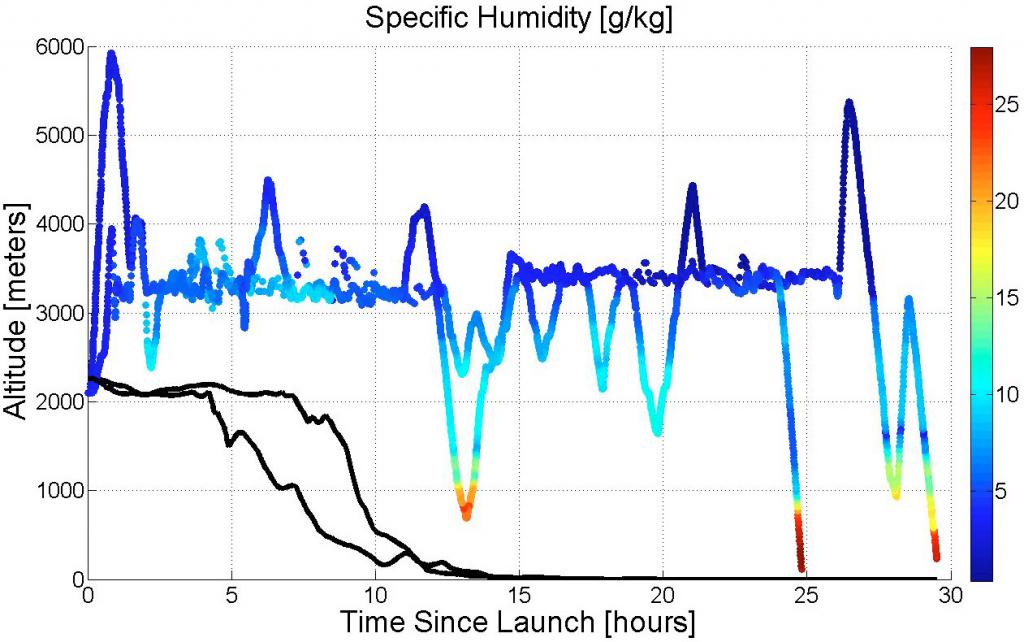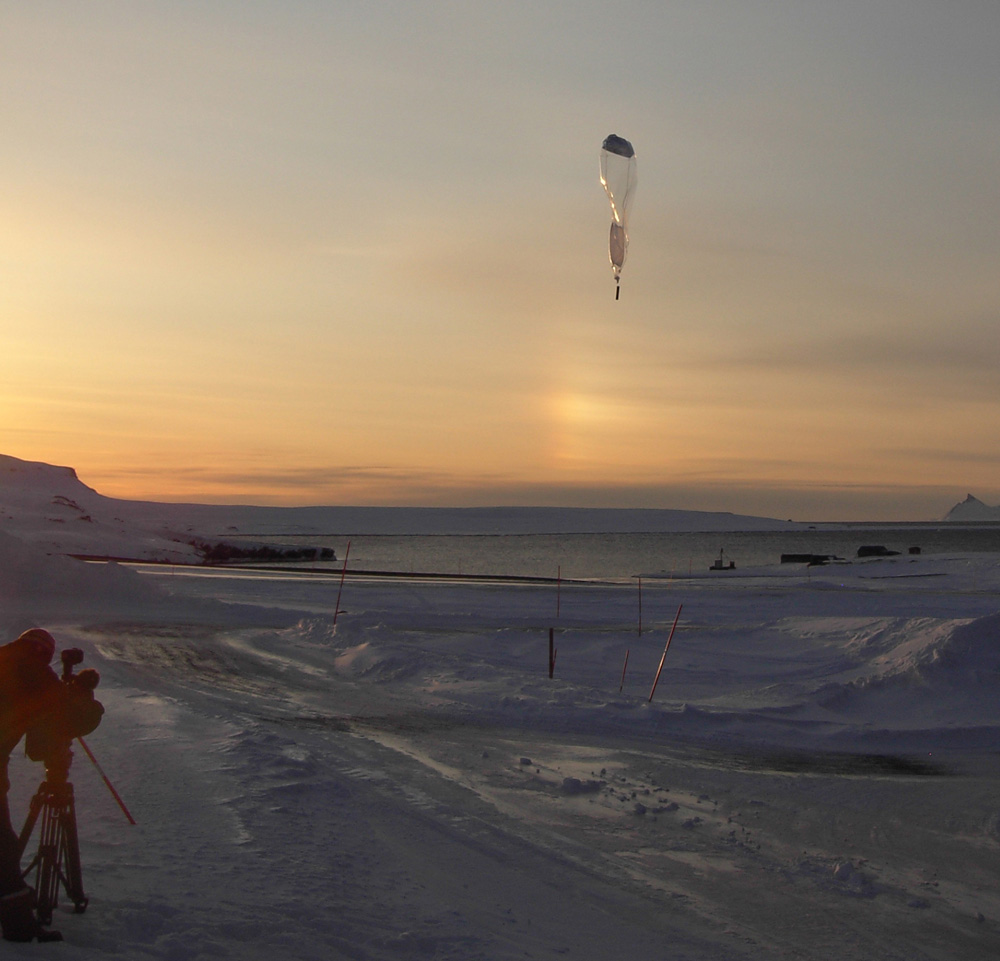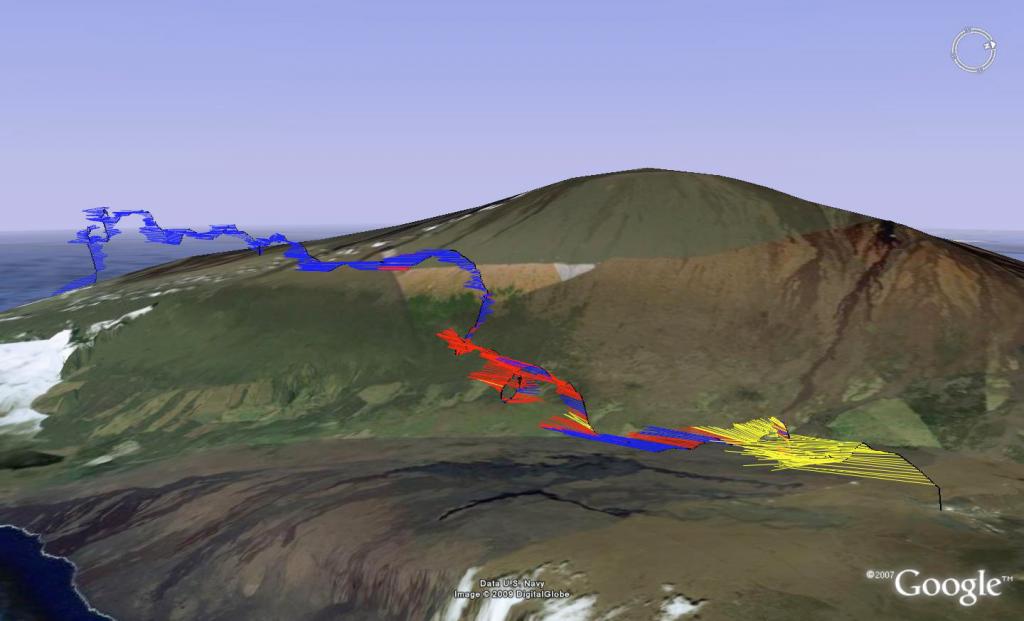Advances in Controlled Meteorological (CMET) Balloon Systems
This project was submitted to Parallax by Paul Voss.
Over the past five years, small altitude-controlled balloons have been developed for atmospheric research and developed in several major field campaigns. These Controlled Meteorological (CMET) balloons have been operated at altitudes from sea level to 18,000 feet, at altitudes from 18 to 80 degrees north, and for periods of up to five days. CMET balloons are now sufficiently simple to prepare and launch that they are being mailed to scientific collaborators oversees and operated remotely via satellite, greatly reducing the cost of making in situ atmospheric measurements. The balloon payload has been redesigned around a novel eight-parallel-processor microcontroller that enables exceptional flexibility and control with appreciable reductions in power consumption and weight. Miniature chemical sensors (carbon dioxide and sulfur dioxide) are now being used for quantifying contaminants and locating atmospheric layers. These new capabilities are being combined with near-real-time data processing, visualization, and control to enable CMET balloons to follow contaminant plumes in three-dimensional space, make repeated profile observations of mixing and dispersion, and report up-to-the minute position information to aviation safety officials. Successes and failures during recent campaigns in Mexico City, Hawaii, and the Arctic are discussed. Advances in balloon design and operations are described in the context of past flights and potential future applications.
I. Introduction and Background
For more than a century, meteorological balloons have provided accurate in-situ profile measurements of atmospheric properties and, more recently, trace gas species. The paper describes recent advances in the development of Controlled Meteorological (CMET) balloon that can remain aloft for days at a time and be commanded to continuously change its altitude during flight. These attributes allow the balloon to perform repeated soundings, track polluted layers, and navigate using wind shear.
The standard CMET balloon consists of a zero-pressure main envelope containing approximately 750 liters of helium. Inside the main envelope is a small high-pressure balloon (approximately 100 liters at 25 kPa super-pressure) that acts as a lightweight helium reservoir. When the CMET balloon is commanded to ascend, helium is released into the zero-pressure balloon. Descent is accomplished by pumping helium back into the reservoir balloon. A small command and control payload (approximately 350 grams) includes a microcontroller, various sensors, a gps receiver, satellite modem, pump, valve, photovoltaic panel, and batteries. The small size and controllability of CMET balloons confers a number of advantages. They can be transported in automobiles, launched in windy conditions, and flown safely in areas that are inaccessible by other means.
Please note: Customers are liable for their own applications and are responsible to self-educate. Anyone who sends a UAV into the air is responsible for reviewing applicable state, county and federal laws independently. Model aircraft need to be operated within line of sight and under the direct control of the operator according to current FAA regulations. UAV's and other airborne projects such as balloons introduce a variety of risks that should be understood by those involved. These devices may become hazards to aircrafts or power lines, etc.
Downloads and Resources:



Over the past five years, small altitude-controlled balloons have been developed for atmospheric research and developed in several major field campaigns. These Controlled Meteorological (CMET) balloons have been operated at altitudes from sea level to 18,000 feet, at altitudes from 18 to 80 degrees north, and for periods of up to five days. CMET balloons are now sufficiently simple to prepare and launch that they are being mailed to scientific collaborators oversees and operated remotely via satellite, greatly reducing the cost of making in situ atmospheric measurements. The balloon payload has been redesigned around a novel eight-parallel-processor microcontroller that enables exceptional flexibility and control with appreciable reductions in power consumption and weight. Miniature chemical sensors (carbon dioxide and sulfur dioxide) are now being used for quantifying contaminants and locating atmospheric layers. These new capabilities are being combined with near-real-time data processing, visualization, and control to enable CMET balloons to follow contaminant plumes in three-dimensional space, make repeated profile observations of mixing and dispersion, and report up-to-the minute position information to aviation safety officials. Successes and failures during recent campaigns in Mexico City, Hawaii, and the Arctic are discussed. Advances in balloon design and operations are described in the context of past flights and potential future applications.
I. Introduction and Background
For more than a century, meteorological balloons have provided accurate in-situ profile measurements of atmospheric properties and, more recently, trace gas species. The paper describes recent advances in the development of Controlled Meteorological (CMET) balloon that can remain aloft for days at a time and be commanded to continuously change its altitude during flight. These attributes allow the balloon to perform repeated soundings, track polluted layers, and navigate using wind shear.
The standard CMET balloon consists of a zero-pressure main envelope containing approximately 750 liters of helium. Inside the main envelope is a small high-pressure balloon (approximately 100 liters at 25 kPa super-pressure) that acts as a lightweight helium reservoir. When the CMET balloon is commanded to ascend, helium is released into the zero-pressure balloon. Descent is accomplished by pumping helium back into the reservoir balloon. A small command and control payload (approximately 350 grams) includes a microcontroller, various sensors, a gps receiver, satellite modem, pump, valve, photovoltaic panel, and batteries. The small size and controllability of CMET balloons confers a number of advantages. They can be transported in automobiles, launched in windy conditions, and flown safely in areas that are inaccessible by other means.
Please note: Customers are liable for their own applications and are responsible to self-educate. Anyone who sends a UAV into the air is responsible for reviewing applicable state, county and federal laws independently. Model aircraft need to be operated within line of sight and under the direct control of the operator according to current FAA regulations. UAV's and other airborne projects such as balloons introduce a variety of risks that should be understood by those involved. These devices may become hazards to aircrafts or power lines, etc.
Downloads and Resources:
- Report: Advances in Controlled Meteorological (CMET) Balloon Systems (See attached .pdf)
- Contact Paul Voss







